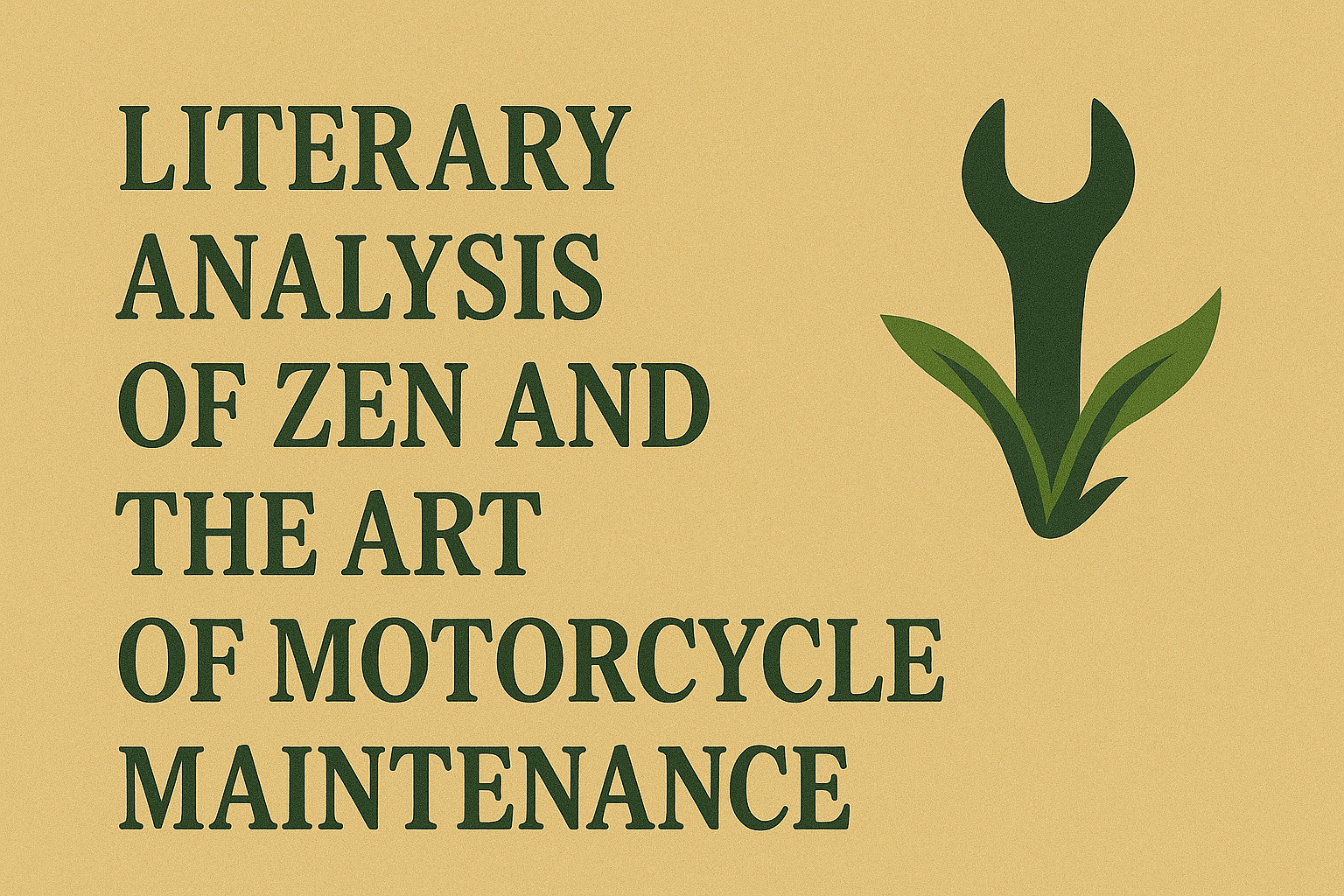A literary analysis of Pirsig’s seminal work, focusing on its narrative structure, philosophical themes, and its impact on readers and culture.
Robert M. Pirsig’s Zen and the Art of Motorcycle Maintenance: An Inquiry into Values is a multifaceted work that combines narrative storytelling with deep philosophical exploration. Published in 1974, the book has become a cultural touchstone, resonating with readers across generations. This literary analysis examines the narrative structure, philosophical themes, and the broader impact of Pirsig’s seminal work.
Narrative Structure
Zen and the Art of Motorcycle Maintenance employs a unique narrative structure that intertwines two distinct but interconnected storylines: the physical journey of a motorcycle trip across America and the intellectual journey of a philosophical inquiry.
- The Motorcycle Trip: The narrative backbone of the book is the cross-country motorcycle journey undertaken by the narrator and his son, Chris. This journey provides a literal and metaphorical framework for exploring broader themes. The detailed descriptions of the landscapes and the mechanical intricacies of motorcycle maintenance ground the philosophical discussions in tangible, real-world experiences.
- The Philosophical Inquiry: Parallel to the travel narrative is the narrator’s philosophical exploration of the concept of quality. This inquiry is often delivered through a series of “Chautauquas,” or reflective discourses, that delve into metaphysical and epistemological questions. These reflections are interwoven with the journey, creating a dynamic interplay between action and contemplation.
- Dual Narratives: The book also weaves in the story of the narrator’s past self, referred to as Phaedrus. This character represents the narrator’s former identity, before a mental breakdown and subsequent treatment. The tension between the narrator’s current self and Phaedrus adds depth to the narrative, illustrating the struggle for self-understanding and reconciliation.
Philosophical Themes
Pirsig’s work is rich with philosophical themes, many of which challenge conventional Western thought and draw from Eastern philosophies.
- The Nature of Quality: Central to the book is the concept of quality, which Pirsig posits as the foundational reality. Quality, in this context, is an undefinable essence that exists prior to and beyond the dichotomy of subject and object. The exploration of quality leads to a critique of traditional rationality and scientific objectivity.
- Classic vs. Romantic Understanding: Pirsig contrasts two modes of understanding: the classic and the romantic. The classic mode is analytical, focusing on the underlying form and function of things, while the romantic mode is intuitive, emphasizing immediate experience and aesthetic appreciation. The tension between these modes is a recurring theme, reflecting broader cultural and intellectual conflicts.
- The Crisis of Modernity: The book addresses the sense of alienation and fragmentation in modern life, attributing it to the dominance of rational, mechanistic thinking. Pirsig advocates for a more holistic approach that integrates the analytical rigor of classic understanding with the immediacy and wholeness of romantic perception.
- Self and Identity: Through the character of Phaedrus, Pirsig explores themes of self, identity, and mental health. The narrator’s journey to reconcile with his past self symbolizes a broader quest for personal coherence and integrity. This theme resonates with readers who grapple with their own identities and the search for meaning.
Impact on Readers and Culture
Zen and the Art of Motorcycle Maintenance has had a profound impact on its readers and on culture more broadly, influencing both personal lives and intellectual discourse.
- Cultural Phenomenon: The book’s blend of narrative and philosophy captured the zeitgeist of the 1970s, appealing to a generation seeking deeper meaning in the midst of social and cultural upheaval. Its success is evidenced by its status as a bestseller and its enduring presence in popular culture.
- Influence on Thought and Practice: Pirsig’s exploration of quality has influenced various fields, from education to business to personal development. Educators, for instance, have drawn on his ideas to promote holistic and integrative teaching methods. In business, the pursuit of quality has become a central tenet of management philosophy.
- Personal Impact: Many readers have reported that the book has profoundly affected their lives, prompting them to reconsider their values and approach to life. The emphasis on quality and the integration of different modes of understanding resonate deeply on a personal level, encouraging self-reflection and growth.
- Intellectual Legacy: Academically, the book has sparked discussions in philosophy, literature, and cultural studies. Its interdisciplinary nature challenges traditional academic boundaries, fostering a more integrated and holistic approach to intellectual inquiry.
Conclusion
Zen and the Art of Motorcycle Maintenance is a richly layered work that transcends simple categorization. Through its innovative narrative structure and profound philosophical themes, it challenges readers to reconsider their understanding of quality, reality, and self. Its impact on readers and culture underscores the enduring relevance of Pirsig’s insights. By blending narrative and philosophy, the book offers a unique and transformative reading experience that continues to inspire and provoke thought.
